Choosing the right boxing gloves is not just about how they look. It is about keeping your hands safe, feeling comfortable, and performing your best. Whether you are boxing for the first time or getting ready for a big match, the gloves you choose can change how well you train and compete. The right size, weight, material, and fit can protect your hands, support your wrists, and help you punch with better control.
At Fortstitch, we will guide you through the different types of gloves, how to measure your hands, and how to pick the best pair for boxing, kickboxing, or Muay Thai. With the right gloves, you can train better, hit with confidence, and protect your hands every time you step into the gym or ring.
Why Boxing Gloves Are Important
Boxing gloves are your shield in the gym or ring. They soften the hit when you punch, protecting your hands from cuts or sprains. They also make sure your sparring buddy stays safe. Long ago, people in Greece wrapped their hands in leather for fights. Now, gloves are made with cool stuff like eco-friendly materials and better padding to keep up with today’s sports.
Common Types of Boxing Gloves
Gloves might look alike, but each one has a special job. Here’s a list of the main types, what they’re like, what they’re used for, and their good and bad points.
1. Training Gloves
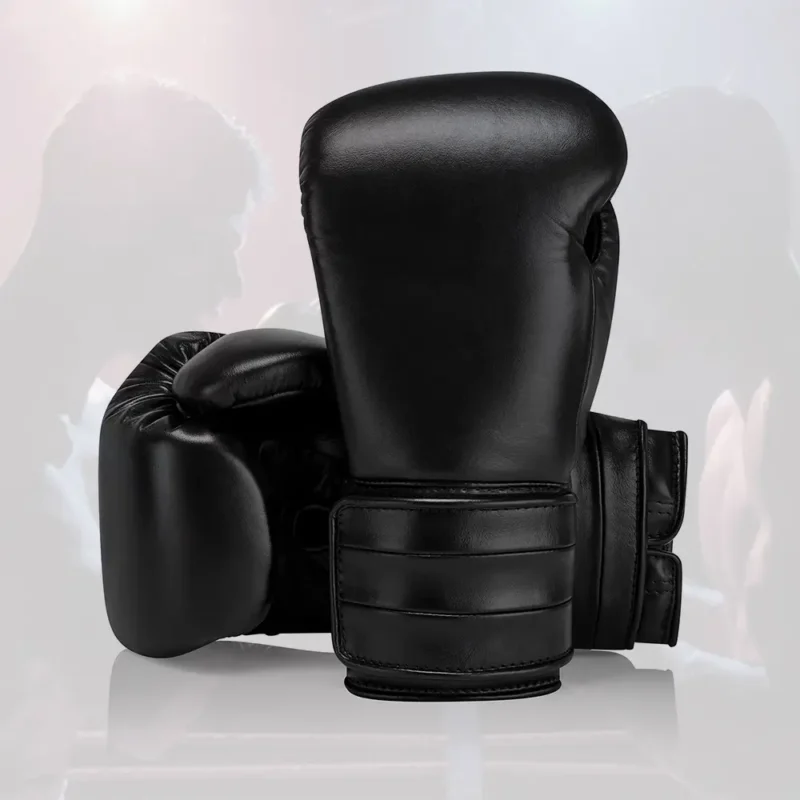
What They Are: All-around gloves you can use for most gym stuff.
Features:
- Thick foam or gel padding on the knuckles to take in the punch.
- Made of leather for toughness or cheaper synthetics.
- Velcro or lace-up to hold your wrist steady.
- Usually 12oz to 16oz for a mix of protection and speed.
Uses: Great for hitting heavy bags, practicing on mitts, or light training with a partner. They’re super useful for most gym work.
Good Stuff:
- Perfect for beginners because they work for lots of things.
- Keeps hands and wrists safe.
- Comfy for long practices.
Bad Stuff:
- Not the best for sparring or real fights, so they might wear out fast if you use them a lot.
- Can feel heavy for super fast drills.
2. Bag Gloves
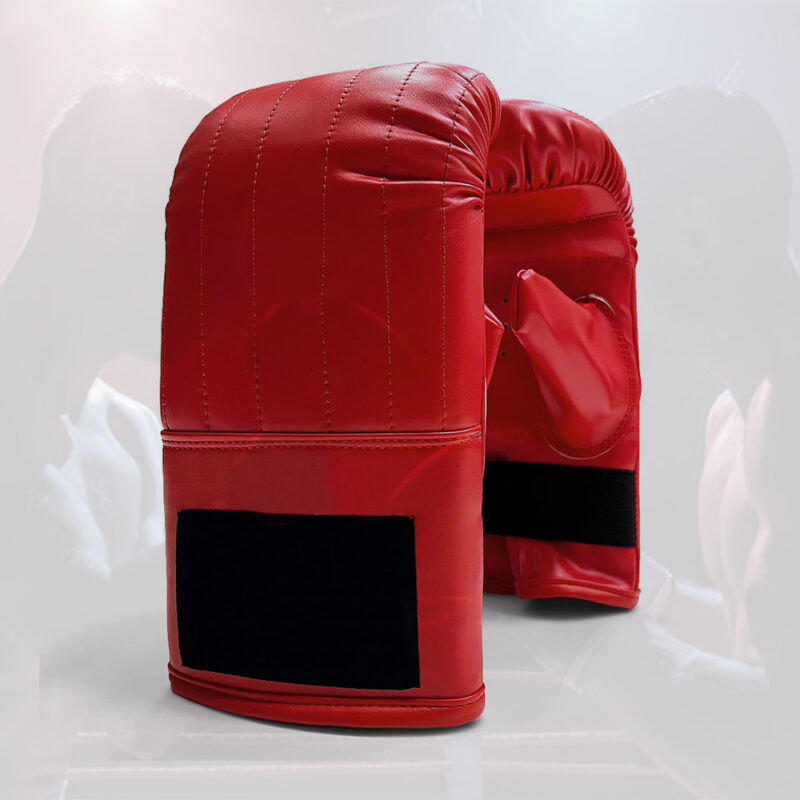
What They Are: Light gloves for hitting bags and working on your moves.
Features:
- Thin foam padding so you feel the punch, helping you fix your form.
- Often made of neoprene or synthetic leather for bendiness.
- Velcro closures with not much wrist support.
- Usually 8oz to 12oz for quick moves.
Uses: Best for heavy bag or speed bag drills, focusing on getting your punches right instead of hitting hard. They let you feel each hit to improve your skills.
Good Stuff:
- Makes your hands faster and more accurate.
- Cheap for beginners.
- Light for quick punches.
Bad Stuff:
- Not much padding, so you might hurt your hands on heavy bags.
- Not good for sparring or working with a partner.
- Not as tough as leather gloves.
3. Sparring Gloves
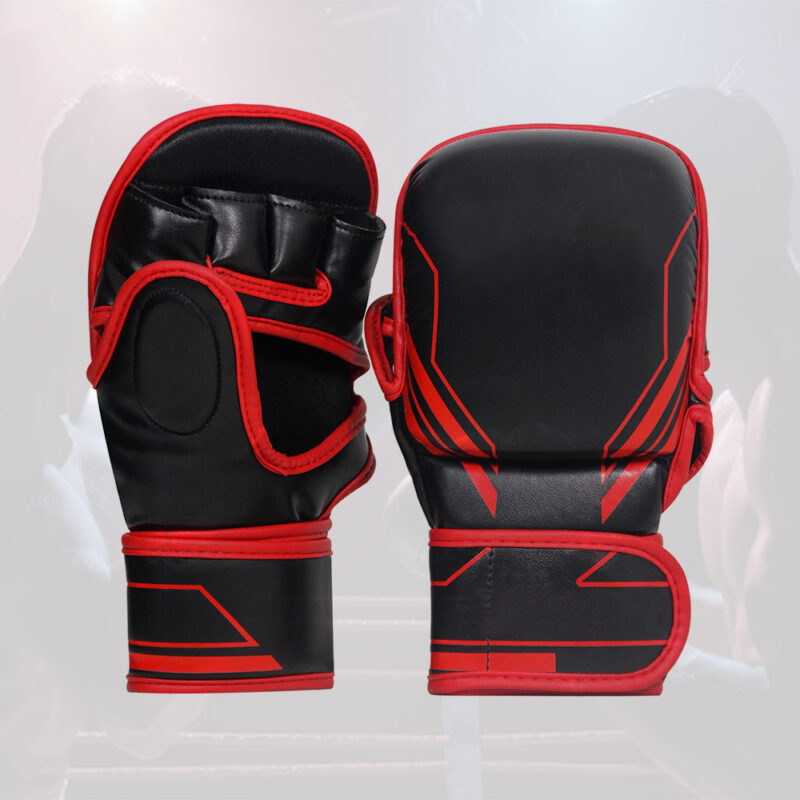
What They Are: Heavier gloves to keep you and your sparring partner safe.
Features:
- Extra soft, thick padding to make punches less hard.
- Usually leather for long-lasting use, but some are synthetic.
- Velcro for easy use; some have laces for a tighter fit.
- Usually 14oz to 18oz, with 16oz as the usual gym rule for safety.
Uses: Made for practicing fights with a partner, keeping everyone safe by softening punches. Most gyms want 16oz or heavier gloves.
Good Stuff:
- Really safe for both fighters.
- Tough for lots of use.
- Lowers the chance of cuts or bruises in practice.
Bad Stuff:
- Too big for bag work or fast drills.
- Padding can wear out if you use them on heavy bags.
4. Competition Gloves
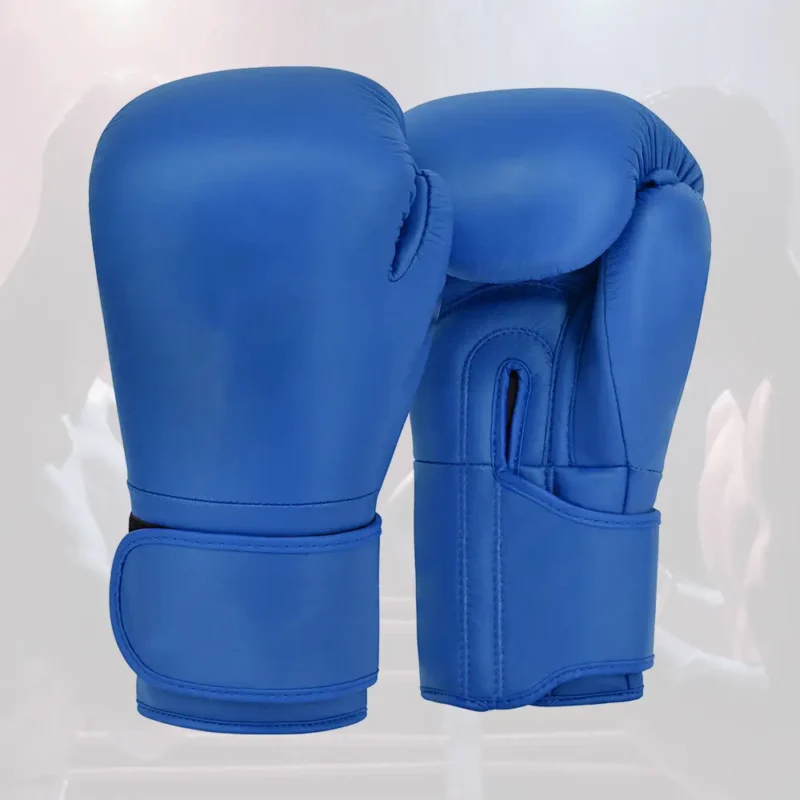
What They Are: Slim gloves for real boxing matches where punches need to hit hard.
Features:
- Stiff, less thick padding to make punches stronger.
- High-quality leather to follow match rules.
- Lace-up closures for a tight fit (Velcro isn’t common in pro fights).
- Weights vary: 8oz to 10oz for pros, 10oz to 12oz for amateurs.
Uses: Used in official boxing matches, following weight class rules (like 10oz for welterweights). Amateur gloves often have white knuckle marks for scoring points.
Good Stuff:
- Makes punches stronger for fights.
- Follows strict match rules.
- Light for faster hits.
Bad Stuff:
- Not much padding, so they’re not safe for training or sparring.
- Only work for specific weight classes and rules.
5. Muay Thai Gloves
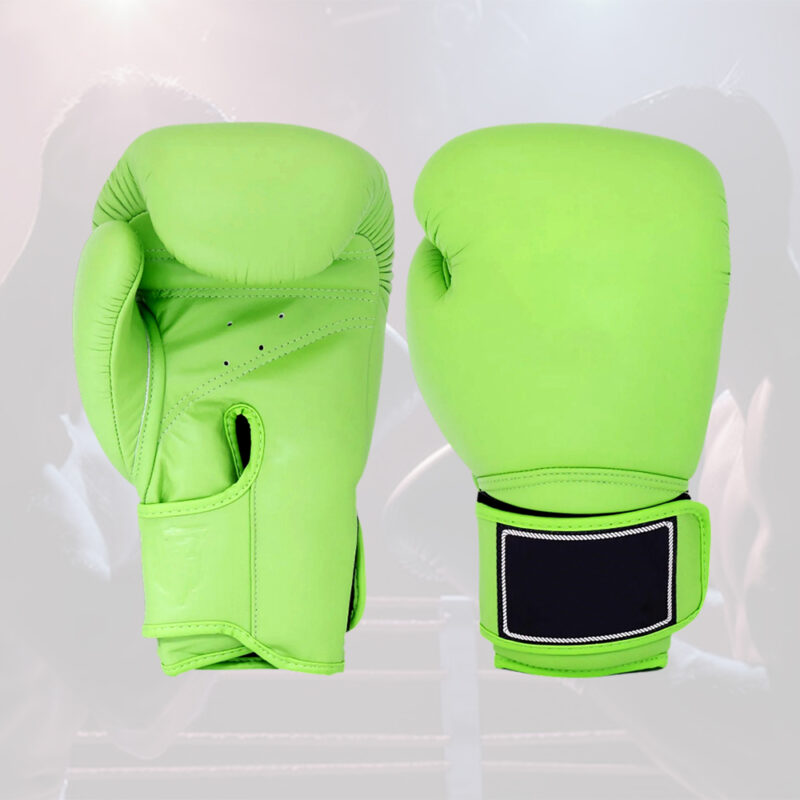
What They Are: Made for Muay Thai, a sport with punches, kicks, elbows, and knees.
Features:
- Even padding all around with extra on the sides and palm.
- Flexible wrist and palm for grabbing and blocking.
- Leather or synthetic, usually 10oz to 16oz.
Uses: Great for Muay Thai training or fights, helping with grabs and blocking different hits.
Good Stuff: Works for kicks, grabs, and blocks; tough for mixed moves.
Bad Stuff: Not as good for regular boxing because of how padding is spread.
6. Kids’ Gloves
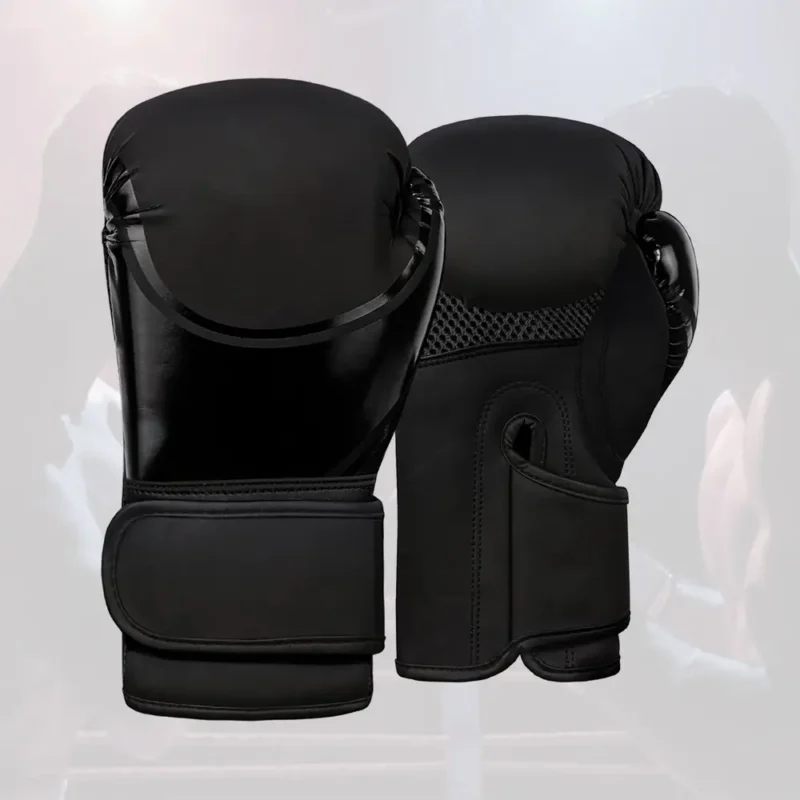
What They Are: Smaller gloves made just for young boxers.
Features:
- Light padding to protect small hands without being too heavy.
- Usually synthetic for affordability, some leather options.
- Velcro closures for easy use by kids.
- Typically 6oz to 10oz for small sizes and safety.
Uses: Perfect for kids learning boxing basics, like bag work or light mitt drills, keeping their hands safe while they build skills.
Good Stuff:
- Sized for kids, so they fit right.
- Safe and light for young beginners.
- Affordable and easy to put on.
Bad Stuff:
- Not for adults or heavy training.
- Less durable due to lighter materials.
7. Cardio Gloves
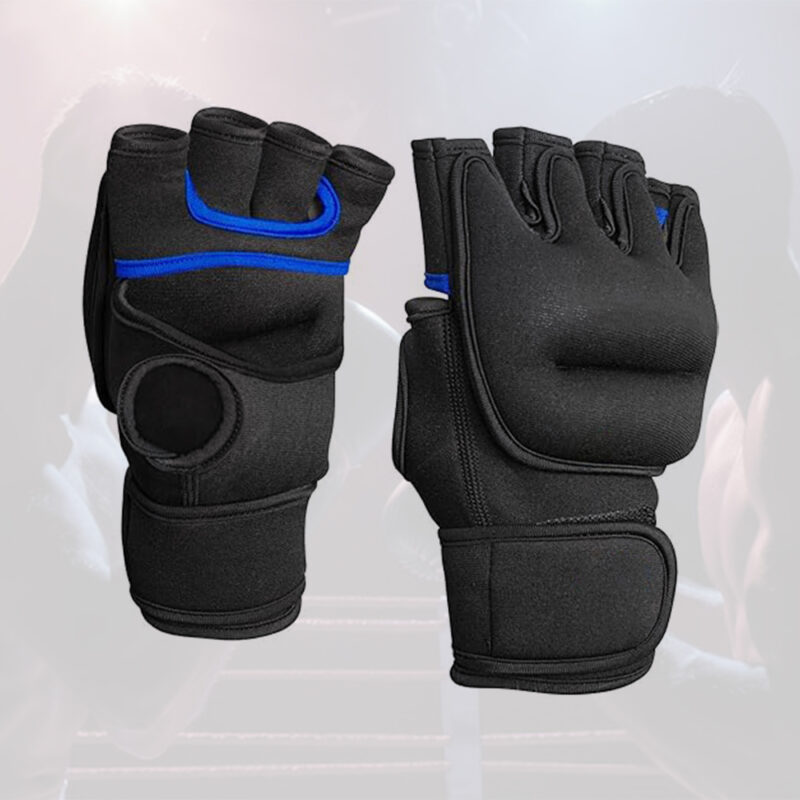
What They Are: Light gloves for fitness-focused boxing workouts.
Features:
- Thin padding for quick punches in fitness classes.
- Often neoprene or synthetic for flexibility and low cost.
- Velcro closures for easy on and off.
- Usually 8oz to 12oz for speed.
Uses: Used in cardio boxing or fitness classes, where you focus on fast punches and movement, not heavy hits.
Good Stuff:
- Super light for quick, fun workouts.
- Cheap and comfy for fitness fans.
- Great for beginners in boxing classes.
Bad Stuff:
- Not enough padding for real bag work or sparring.
- Wears out fast if used for heavy training.
8. MMA Hybrid Gloves
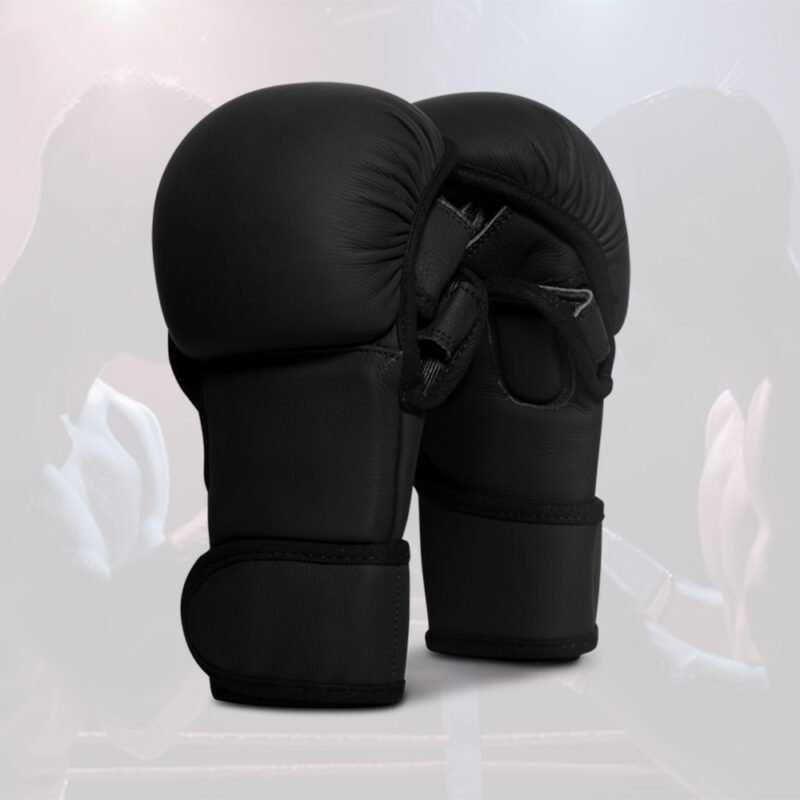
What They Are: Light, open-finger gloves for mixed martial arts with some boxing use.
Features:
- Thin padding (4oz to 7oz) on knuckles and hand back.
- Open fingers for grabbing and hitting.
- Velcro closures for bendiness.
Uses: Made for MMA, good for both hitting and grappling, but can be used for light boxing drills.
Good Stuff: Lets your hands move freely; light for speed.
Bad Stuff: Not much protection, not good for just boxing.
9. Lace-Up Gloves
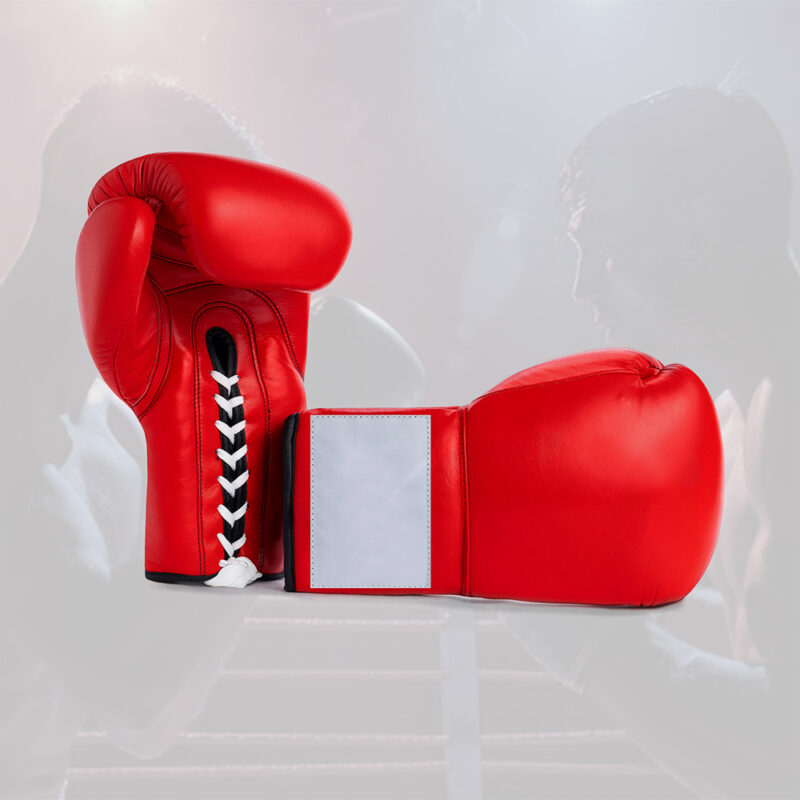
What They Are: Gloves with laces for a tight, custom fit, often used by pros.
Features:
- Thick or stiff padding, depending on use (training or competition).
- Usually leather for durability.
- Lace-up closures for strong wrist support.
- Varies from 8oz to 16oz, depending on purpose.
Uses: Great for pro training, sparring, or fights, giving a secure fit for hard punches.
Good Stuff:
- Super snug and supportive fit.
- Tough for heavy use.
- Preferred by pros for stability.
Bad Stuff:
- Hard to put on without help.
- Takes longer to tie and untie.
10. Velcro Gloves
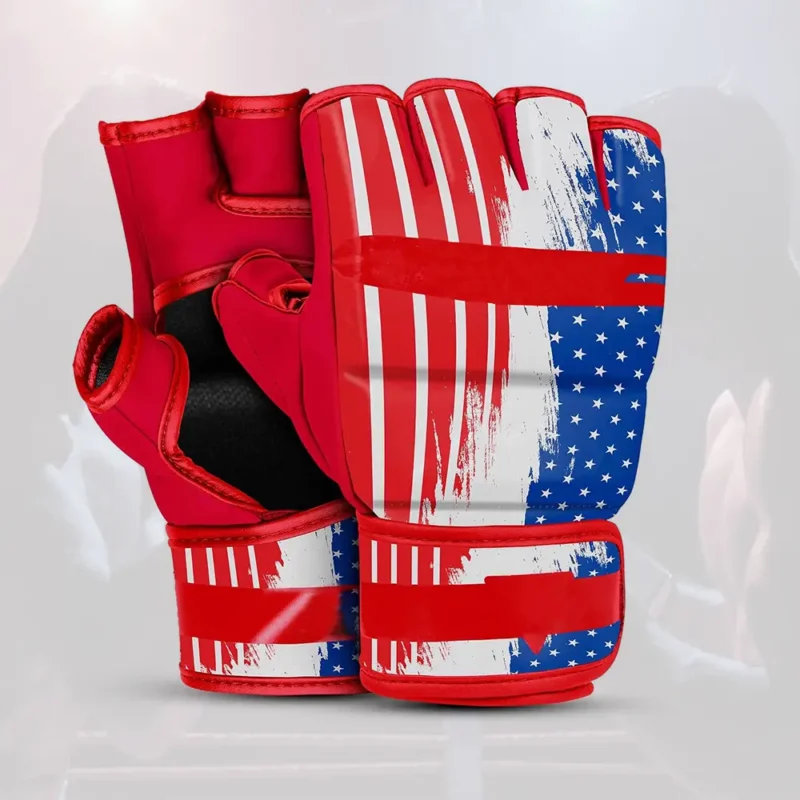
What They Are: Gloves with Velcro straps for quick and easy use.
Features:
- Padding varies (thick for training, thin for bags).
- Leather or synthetic, depending on type.
- Velcro closures for fast on and off.
- Usually 8oz to 16oz, based on use.
Uses: Perfect for solo training, like bag work or fitness drills, where you need to put gloves on and off fast.
Good Stuff:
- Easy to use without help.
- Great for beginners and quick workouts.
- Works for many training types.
Bad Stuff:
- Velcro can wear out over time.
- Less tight than lace-up gloves.
How to Pick the Right Boxing Gloves
Choosing gloves is all about a few key things:
- Safety: You need enough padding to protect your knuckles and wrists. Foam or gel inside the gloves soaks up the shock from punches.
- Size and Weight: Gloves are measured in ounces, like 8oz or 16oz. Heavier gloves (14oz to 16oz) give more protection and are great for beginners or sparring. Lighter ones (8oz to 12oz) are faster for fights or pro training.
- Material: Leather lasts long and feels nice but costs more. Synthetic stuff like polyurethane is cheaper and easier to clean but wears out quicker.
- Closure Type: Velcro is easy to put on and take off by yourself. Lace-up gloves fit tight but need help to tie.
- Fit: Measure around your hand just below the knuckles with a tape measure or string and ruler. Gloves should feel snug but not tight, with your fingers close to the top.
If you’re new, get 12oz to 14oz training gloves because they work for most things. If you’re fighting in matches, you’ll need special gloves for rules. New gloves have better air vents and germ-fighting linings to stay fresh.
Sizing and Weight Guide
Getting the right size keeps you comfy and safe. Measure around your hand below the knuckles and think about your body weight. Here’s an easy guide:
| Body Weight (lbs) | Training/Bag/Cardio/Velcro Gloves (oz) | Sparring/Lace-Up Gloves (oz) | Competition Gloves (oz) | Kids’ Gloves (oz) |
| Under 100 | 8 to 12 | 12 to 14 | 10 to 12 (Amateur) | 6 to 8 |
| 101 to 150 | 12 to 14 | 14 to 16 | 10 to 12 (Amateur) | 8 to 10 |
| 151 to 175 | 14 to 16 | 16 to 18 | 8 to 10 (Pro) | Not for kids |
| Over 175 | 16 to 18 | 18 or more | 8 to 10 (Pro) | Not for kids |
Tips:
- Heavier gloves mean more protection but slower punches.
- Lighter gloves are faster but have less padding.
- Adjustable wrist straps are popular for a perfect fit.
Maintenance and Care
To make gloves last, keep them clean and dry. After each use:
- Wipe inside and out with a damp cloth and mild soap to get rid of sweat.
- Let the air dry in a cool spot, not in sunlight or heat.
- Stuff with newspaper or use glove deodorizers to soak up wetness.
- Store in a mesh bag for air flow.
If the padding gets flat or smells bad even after cleaning, get new gloves. Germ-fighting linings and air vents are common now, helping gloves stay fresh longer.
Conclusion
Boxing gloves are your best buddy in the gym or ring. From all-purpose training gloves to hard-hitting competition ones, each type has a job. Kids’ gloves make boxing safe for young ones, while cardio and MMA hybrid gloves add fun and variety. Lace-up and Velcro gloves give you options for fit and ease. Choose based on what you need, like speed, safety, or power, and match your size and weight for the best fit.

